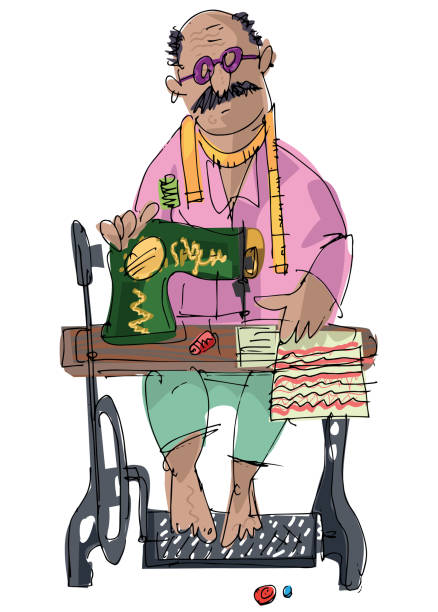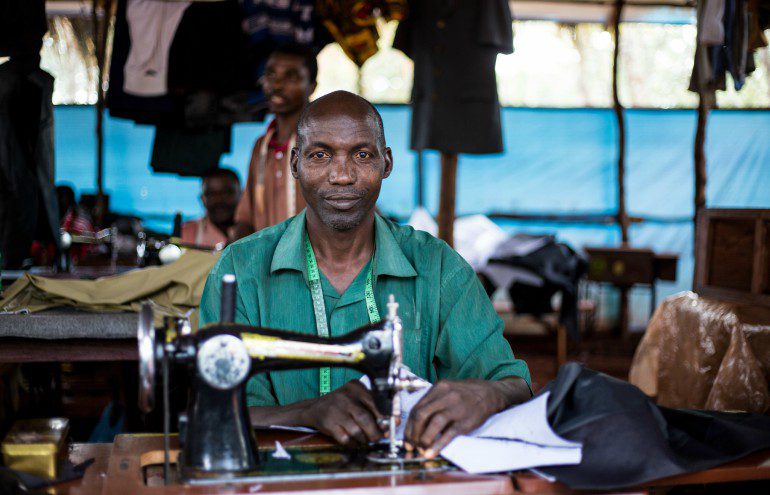Tailor Perth Excellence: Your Destination for Bespoke Tailoring
Wiki Article
Comprehending the Tailoring Refine: From Fabric Option to Last Fitting for the Suitable Wardrobe
The tailoring process is a complex interplay of art and scientific research, starting with the essential choice of textile selection and culminating in the exact changes of last installations. Each textile type brings one-of-a-kind qualities that affect not only the visual appeal but also the garment's longevity and viability for various events.Relevance of Textile Choice
Selecting the right fabric is critical in the tailoring procedure, as it straight affects the comfort, durability, and total aesthetic of the final garment (tailor perth). The option of fabric establishes the structure for the garment's functionality, style, and efficiency. Different textiles possess one-of-a-kind properties, such as breathability, weight, and stretch, which can significantly influence how the garment drapes and fits the bodyAdditionally, material option affects the garment's long life and ease of treatment. High-grade textiles can stand up to damage, keeping their appearance and framework in time, while lower-quality products might cause pilling or fading. Furthermore, the appropriate material adds to the garment's ability to transition across events and periods, consequently improving versatility.
A tailored item made from a proper fabric not just showcases craftsmanship yet also elevates the user's confidence. As a result, comprehending the subtleties of textile option is critical for any type of customizing endeavor. It ensures that the end product not only fulfills the visual needs of the client however also lines up with practical requirements, consequently attaining an unified equilibrium between form and function in the customized closet.
Types of Fabrics and Their Uses
Comprehending the numerous sorts of materials readily available is essential for making notified decisions during the tailoring process. Each fabric has unique characteristics that dictate its viability for specific garments and celebrations.Its versatility allows it to be tailored right into every little thing from tee shirts to gowns. Its natural flexibility helps garments maintain shape over time.
Silk exhibits high-end and is lightweight, making it best for eveningwear and fragile blouses; however, it requires cautious handling due to its fragility. Bed linen, with its distinctive coating, is a prominent selection for cozy climates, offering a crisp and airy feeling, yet it wrinkles quickly, which may impact the garment's appearance.
Artificial fabrics, such as polyester and nylon, deal longevity and resistance to creases, making them ideal for daily wear and active apparel. Understanding these textile types and their residential properties enables for better decision-making, making sure that each customized item not just fits well yet also lines up with the desired objective and occasion.
The Tailoring Strategies Clarified
The art of customizing counts on a variety of techniques that transform material into well-fitted garments. Central to this procedure is pattern drafting, where a tailor produces layouts based upon the client's measurements and preferred style. This first action guarantees that the garment will certainly fit the user effectively before any type of cutting happens.As soon as patterns are developed, cutting methods come into play. Precision is critical as mistakes can result in misfitting garments. Tailors typically utilize various cutting techniques, such as single-layer reducing for complex layouts and multiple-layer reducing for performance you can find out more on common patterns.
Basting is another important method, permitting dressmakers to temporarily stitch textile items together for a preliminary installation. This method supplies the chance to examine the drape and general shape before final stitching.
Seaming techniques, consisting of french seams and flat-felled joints, improve the garment's longevity and visual official source appeal. Tailors likewise use methods such as interfacing and padding to offer structure and shape to certain locations, like shoulders and collars.
Lastly, ending up methods, including hemming and edge completing, make sure the garment's durability while offering a polished look. With each other, these techniques develop the backbone of efficient tailoring, causing beautiful, custom-fit apparel.
Suitable Adjustments and Considerations

Trick factors to consider consist of the shoulder fit, which must neither sag nor restrict motion, and the sleeve size, which ought to permit for comfortable arm movement while keeping a sleek look. Additionally, changes at the waistline can refine the shape, with options to allow out or absorb material as needed.
The increase of pants is another vital variable; it must sit easily over the hips without triggering pain, enabling ease of activity. Hemming lengths for both trousers and skirts should mirror the user's preferred design while appreciating percentages.

Maintaining Your Tailored Clothes
Appropriate maintenance of customized garments is necessary to preserving their fit and appearance with time. To guarantee longevity, routine cleaning is critical. Always comply with the care label directions, which may recommend completely dry cleaning for fragile textiles or equipment cleaning for more sturdy materials. Avoid regular laundering, as this can use down the material and change the garment's form.Storage space is equally essential; usage padded hangers for jackets and layers to keep shoulder framework, and shop website here trousers folded nicely or hung to protect against creasing. Shield garments from direct sunshine, which can discolor shades and damage fibers.
In addition, periodic evaluations for small repair work can protect against larger issues. Examine for loosened buttons, tearing joints, or indications of moth damage, addressing these issues without delay to preserve the garment's honesty.
Lastly, think about seasonal turning. Putting on customized items in moderation enables fabrics to recover, extending their lifespan. By carrying out these maintenance approaches, you can guarantee that your tailored garments stay as beautiful as the day you first wore them, enhancing your ideal wardrobe for several years ahead.
Verdict
The customizing procedure, incorporating material option, experienced strategies, and exact suitable adjustments, plays an essential duty in developing garments that boost both comfort and style. Each phase adds to the total efficiency of the end product, making sure that clothing not just fits well yet likewise reflects individual identity. Understanding the significance of maintenance extends the life of tailored garments, strengthening their worth in a well-curated closet. A detailed strategy to customizing culminates in a sleek and confident look.Selecting the appropriate fabric is vital in the customizing procedure, as it directly influences the comfort, durability, and overall aesthetic of the last garment. The choice of material establishes the structure for the garment's capability, style, and performance. Various textiles have special residential or commercial properties, such as weight, stretch, and breathability, which can considerably affect exactly how the garment drapes and fits the body.
The art of customizing relies on a range of techniques that transform fabric right into well-fitted garments.The customizing process, encompassing fabric choice, skilled techniques, and exact suitable changes, plays a vital duty in creating garments that boost both convenience and design.
Report this wiki page